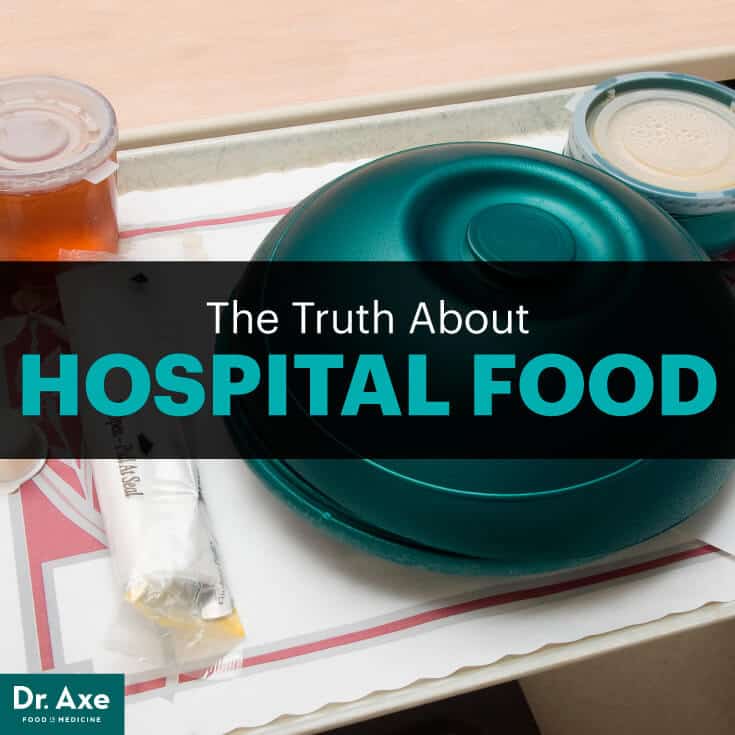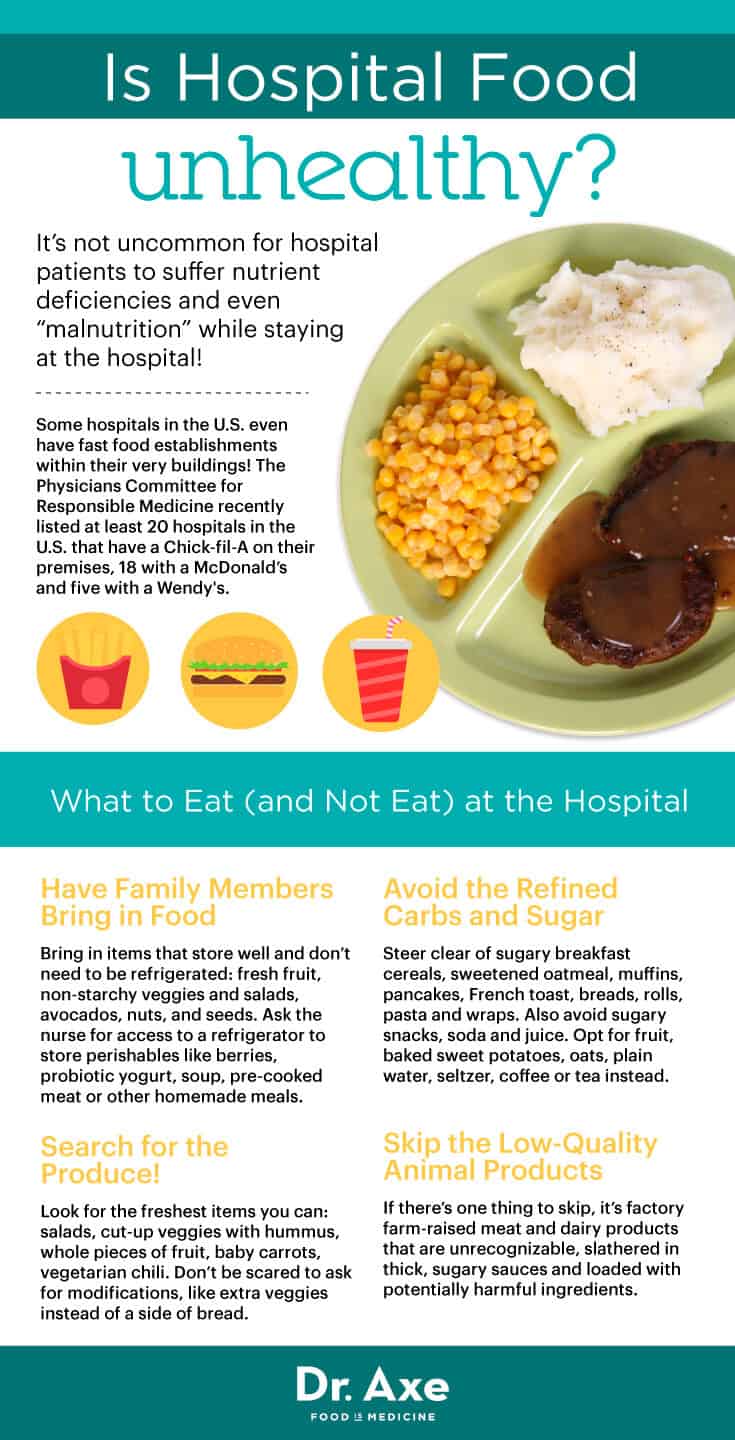This Dr. Axe content is medically reviewed or fact checked to ensure factually accurate information.
With strict editorial sourcing guidelines, we only link to academic research institutions, reputable media sites and, when research is available, medically peer-reviewed studies. Note that the numbers in parentheses (1, 2, etc.) are clickable links to these studies.
The information in our articles is NOT intended to replace a one-on-one relationship with a qualified health care professional and is not intended as medical advice.
This article is based on scientific evidence, written by experts and fact checked by our trained editorial staff. Note that the numbers in parentheses (1, 2, etc.) are clickable links to medically peer-reviewed studies.
Our team includes licensed nutritionists and dietitians, certified health education specialists, as well as certified strength and conditioning specialists, personal trainers and corrective exercise specialists. Our team aims to be not only thorough with its research, but also objective and unbiased.
The information in our articles is NOT intended to replace a one-on-one relationship with a qualified health care professional and is not intended as medical advice.
The Truth About Hospital Food, Plus What to Eat at the Hospital
June 21, 2017

As Hippocrates said, “Let food be thy medicine and medicine be thy food.” But if you’ve stayed at or visited someone staying at a hospital recently, you might have noticed that the cafeteria options available and patient meal plans offered weren’t exactly what you’d expect.
Sadly, it seems like most of the food served in hospitals today — even to sick patients who are recovering from life-threatening diseases like cancer or recent heart attacks — is working directly against the exact illnesses that doctors and nurses are trying to treat!
Hospitals save lives in times of emergencies, but they’re also meant to be healing institutions that teach patients how to take better care of themselves once they check out. Unfortunately, just like it can be confusing how to eat out, hospital staff don’t seem to understand how to feed you or your loved ones when you check in.
Most of the food served in hospitals affects not only the health of the patients, their visitors and employees — but also the broader community, society and the environment. If hospitals can’t even serve healthy food to critically ill patients, what hope do the rest of us have?
What’s Wrong with Hospital Food?
Hospital food administration is a complex issue, since most hospitals work with large food manufacturers similar to those that cater public school lunches (a controversial topic of its own!). Some hospitals in the U.S. even have fast food establishments within their very buildings! The Physicians Committee for Responsible Medicine recently listed at least 20 hospitals in the U.S. that have a Chick-fil-A on their premises, 18 with a McDonald’s and five with a Wendy’s.
Even though hospital dietitians and medical staff might know better, their advice doesn’t seem to hold when you walk through most hospital cafeterias. Cheeseburgers, fried foods, processed meats, soda and sweetened drinks, cookies, and other packaged snacks filled with terrible ingredients and artificial sweeteners are plentiful.
What’s even scarier is what the patients themselves are served (or allowed to choose from). For example, juice and cereal with conventional low-fat milk for breakfast, macaroni and cheese with a soda for lunch, pasta with meat sauce for dinner, followed by cheesecake for dessert (umm, yes, it unfortunately mirrors the standard American diet to the very end).
The Guardian has been following the sad story of hospital food for several years now. According to its research, more than 80,000 hospital meals are left uneaten every day and two-thirds of staffers admit they would not themselves eat what they serve up to patients! (1)
In the Unites States, neglect of nutrient intake of many hospital patients is a real concern, but sadly it’s not getting the attention it deserves on a government level. Research regarding hospital food is mostly outdated, as it seems there hasn’t been a strong enough push for improving either hospital cafeteria options or meal plans for patients in recent years.
The research that does exist about hospital food — mostly dating back to the 1980s, ’90s and early 2000s — shows that it’s not uncommon at all for hospital patients to suffer nutrient deficiencies and even “malnutrition” while staying at the hospital!
One study from the ’80s found that when patients’ meal plans and food intakes were studied over five consecutive days, on average their daily energy intake of calories was less than the predicted basal metabolic rate, their daily protein intake was less than the level recommended for their ideal body weight — and protein deficiency can have serious consequences.
Additionally, they had lower intakes of iron — which could lead to a health-threatening iron deficiency — and certain vitamins than are recommended for adults. There were no also no differences observed in food intake or meal plans between patients staying in different wards, suggesting that even patients in intensive care units likely weren’t receiving additional attention or care when it came to their meals.

Why It’s Time for a Change
In 2013, the American Medical Association Journal of Ethics published a report about growing concerns over the quality of hospital food. One board member was quoted as saying: (2)
I believe that it is simply unethical to be serving patients’ families, visitors and our staff members the unhealthy food that is currently being sold in this institution. It is our responsibility as a health-promoting organization to foster all aspects of health. The hospital is a role model for our visitors and staff, and we must set high-quality standards when it comes to our nutritional offerings.
Unfortunately, other AMA board members don’t seem to feel the same, stating that “when it comes down to it, it’s every person’s responsibility to make his or her own food choices. Our main responsibility as the hospital’s representatives is not to change individual behavior but to serve the low-income population in our community — and to do that we must ensure the fiscal future of our institution.”
In fact, many hospitals use the excuse that healthy food is too expensive. In their eyes, using their current food vendors — who mostly supply low-quality, cheap ingredients, like factory-farmed meats — is the only option that makes sticking within the hospital’s budget constraints possible.
Some hospitals claim that they’ve tried to work with food suppliers to offer healthier, well-rounded meals, asking for the suppliers to help weigh in and up the standards of hospital ingredients. But the problem is this: The food manufacturers themselves are worried about one thing and pretty much one thing only: making money! Considering that The Guardian found that most hospital kitchens are rarely actually cooking much food, rather just reheating frozen meals and undoing packages much like in school cafeterias, it seems like the manufacturers are more in charge than the hospital staff.
In order to uphold their “fiscal responsibility,” while still doing their job of promoting better health, some hospitals might try to educate the public about health issues. Many have community programs that recommend avoiding certain ingredients — like sugar, high sources of calories or additives — but they still won’t stop serving them! As the AMA puts it, it can educate about “the nutritional content of foods such as the amount of fat, cholesterol, and sodium in the cafeteria offering, and then leave it up to the visitors and staff to make their own choices.”
Still, it seems like hospitals profiting from selling unhealthy, cheap foods is in direct conflict with their broader missions. In an age where obesity, heart disease, diabetes and cancer rates are soaring, is it really too much to ask for a hospital to promote sustainable health, help prevent future disease development and set an example for what a healthy lifestyle looks like?
Recommendations for What to Eat at the Hospital
Recently, some European nations have recognized the immediate need to overhaul hospital food; for example, the English government commissioned the Hospital Food Standards Panel, an independent body of experts, to look into ways of improving the quality of food, setting hospital nutritional recommendations with minimum requirements and holding hospital administrators to higher standards.
As of now, the U.S. government hasn’t put any similar plan into action. Until the day that happens, you can use these tips below to help keep yourself and your family members in better health while staying at the hospital:
1. Have Family Members Bring in Food Instead
Your best bet when it comes to making sure your family members staying in the hospital eat well? Take initiative and bring healthy food in for them! Relying on the hospital to provide all meals and snacks to patients for several days could spell disaster: salt, hidden sugar, refined vegetable oils, additives, preservatives, food colorings, farm-raised animal products and chemical flavoring are found in far too many hospital meals.
Rather than stopping inflammation, which is the root of most diseases, these foods only make matters much worse. Instead, bring in items that store well and don’t need to be refrigerated — such as fresh fruit, non-starchy veggies and salads, benefit-rich avocados, nuts and seeds. You can speak to your family member’s nurse about having access to a refrigerator in order to store perishable things like berries, probiotic yogurt, soup, pre-cooked meat or other homemade meals.
2. Search for the Produce!
If you do have to choose from the hospital’s menu or cafeteria options, look for the freshest items you can: salads, cut-up veggies with hummus and whole pieces of fruit, for example. Anything with just a few simple, recognizable ingredients is going to be the best option.
Some hospital menus only offer very limited, but crucial, anti-inflammatory foods or veggie-based options as part of patients’ meals. Things like baby carrots or a vegetarian chili might be all that’s available — but every little bit is better than nothing. Also, don’t be scared to be picky and ask for modifications, like extra veggies instead of a side of bread.
3. Avoid the Refined Carbs and Sugar
Because many dietary plans for patients look to avoid saturated fats, salt and cholesterol — including the “Cardiac Diet” that all patients suffering from heart disease are put on — this can mean that many food options are high in inflammatory sugar, refined carbohydrates and processed grains. After all, taking out naturally occurring fat from foods means something else has to takes its place, and you can bet it’s usually more addictive carbs and sugar!
Steer clear of things like sugary breakfast cereals, sweetened oatmeal, muffins, pancakes, French toast, breads, rolls, pasta and wraps. Fruit, baked sweet potatoes and plain rolled oats are all good options to keep on hand instead. Also try to avoid snacking on the many sugary snacks sold in hospitals (donuts, cookies and granola bars, for example), and drink plain water, seltzer, coffee or tea instead of soda and juice.
4. Skip the Low-Quality Animal Products
Since budget concerns are a real issue for hospitals, you can bet that the animal products being served (beef, chicken, turkey, eggs or dairy products) are not of the highest quality. If there’s one thing to skip, it’s factory farm-raised meat and dairy products that are unrecognizable, slathered in thick, sugary sauces and loaded with potentially harmful ingredients.
Animal products can definitely be a part of a healing diet for most patients, but the kinds that support health best need to be brought in by family members. It’s worth it, however, because these are higher in nutrients and essential fatty acids from being grass-fed, pasture-raised, organic and cage-free.
How to Support the Cause for Healthier Hospital Food
Luckily, the disappointing situation regarding hospital food in the U.S. is gaining attention, and people want to see some changes made. Several hospitals have agreed to start thinking differently about the food they offer patients and visitors, knowing that what they put in their bodies during treatment can make all the difference.
To keep costs down, farm-raised animals are usually fed the cheapest ingredients possible and kept indoors in tightly packed quarters, where illnesses are common and antibiotics or hormones are needed in many cases to keep the animals alive.
What You Can Do to Help
Various small groups around the country are doing their part to change the hospital food trend, including some local farming initiatives aimed at having hospitals support local farmers. One example is Henry Ford West Bloomfield Hospital located near Detroit, where patients, family members and hospital employees now “dine on nutritious meals made from fresh produce like tomatoes, kale, eggplant, and strawberries.”
At this hospital, a very large percentage of the food served is actually locally grown; in fact, much of it is grown inside the 1500-square-foot hydroponic greenhouse that the hospital built! Recently, the same hospital also unveiled an educational center where everyone from patients to the public can come to learn about making healthy food choices and promoting mindful eating.
While only a select few hospitals nationwide are able to support local farmers as of now, there’s hope that many more are headed in the right direction. One noteworthy nonprofit group to emerge and gain a following since 2012 is the Hospital Healthier Food Initiative, part of the national foundation called Partnership for a Healthier America (PHA) that aims to reduce obesity in the U.S., especially childhood obesity. PHA has made it its mission to team up with public and private hospitals around the U.S., along with hospital food providers, in order to deliver healthier options to both sick patients and visitors.
This initiative is considered to be the most expansive program yet for improving hospital nutrition programs, led by some of the nation’s most respected health and childhood obesity advocates, as well as powerful public figures like First Lady Michelle Obama; they’re continuing to pick up support as more and more hospitals sign on. You can find out more about how to volunteer, donate to join their initiative on the PHA website.




